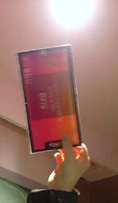 Various Technologies
Various Technologies Ubiquitous technology is used in a lot of fields. The first is RFID (Radio Frequency Identification). It is the technology that exchanges information with the systems of a computer after a chip is attached to a product. There is much information about the distribution, production, and consumption of the product in the chip. Using RFID, a manager can update the product through the chip. The former bar codes have only information that was inputted at first, but RFID can change the information. In addition, RFID has a lot of functions. The functions are helpful for industry and home, so it is used in many parts of industry and home. The fields to which it is applied most are the distribution industry and finance. Through chips, distribution industries track air cargo or luggage, manage freight, and check delivery mistakes in door-to-door delivery. Finance uses electronic wallets or bus cards. If you have those, you can go shopping without cash.
 The second system is a color code. A color code is a three-dimensional recognition code that evolved from bar codes. This is the USN (Ubiquitous Sensor Network) product, which recognizes information through a built-in camera in a cellular phone, PDA (Personal Digital Assistants), or PC (Personal Computer). It is made by compounding red, green, blue, and black in rectangular cells. It can represent 1200 trillion color codes. The color means the IP (Internet Protocol) address. Users can receive wireless digital contents with images, movies, games, voices, and words by connecting to a site. That is, a color code is the key connecting virtual information and the actual world. Using the key, many people will obtain more information in the future.
The second system is a color code. A color code is a three-dimensional recognition code that evolved from bar codes. This is the USN (Ubiquitous Sensor Network) product, which recognizes information through a built-in camera in a cellular phone, PDA (Personal Digital Assistants), or PC (Personal Computer). It is made by compounding red, green, blue, and black in rectangular cells. It can represent 1200 trillion color codes. The color means the IP (Internet Protocol) address. Users can receive wireless digital contents with images, movies, games, voices, and words by connecting to a site. That is, a color code is the key connecting virtual information and the actual world. Using the key, many people will obtain more information in the future.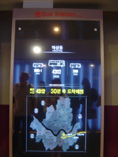 The third system is BIS (Bus Information System). This is a traffic system providing the real-time service route of a bus. GPS is set up on buses and sends the situation of a bus to a traffic information center through a satellite. It shows the situation of a bus on a digital direction board at each bus stop. Therefore, passengers can confirm whether or not they can get on a bus, after how many minutes, and when passengers can arrive at a destination. In this system, you can know when a bus opens the door, violates the speed limit, and leaves a traffic lane. A manager can control safe driving through communication with the driver of a bus. The timetable is updated on the Internet. Therefore, people can confirm the situation of a bus on the Internet.
The third system is BIS (Bus Information System). This is a traffic system providing the real-time service route of a bus. GPS is set up on buses and sends the situation of a bus to a traffic information center through a satellite. It shows the situation of a bus on a digital direction board at each bus stop. Therefore, passengers can confirm whether or not they can get on a bus, after how many minutes, and when passengers can arrive at a destination. In this system, you can know when a bus opens the door, violates the speed limit, and leaves a traffic lane. A manager can control safe driving through communication with the driver of a bus. The timetable is updated on the Internet. Therefore, people can confirm the situation of a bus on the Internet.The fourth system is LBS (Location Based Service). Using a chip in a cellular phone, LBS finds the positions of users. LBS uses a satellite. GPS (Global Positioning System) belongs to this way. If you use it, you can know your own position, your friend’s position, and your family’s position with your cellular phone. LBS is classified by the type of service, from position finding service to public safety service. LBS is based on mobile communication companies. Recently, LBS was expanded through SK Telecom, KTF, and LG Telecom.
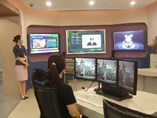 The fifth system is ASR (Automatic Speech Recognition). It is the most advanced software technology. A computer analyzes a voice input by telephone, a cellular phone, or a microphone, finds its identity, and displays the voice in words. It can communicate with computer systems. It is the most attractive technology of an input device. It is good technology that we can input most easily in home appliances. The appliances have a sensor that can read a voice. When the sensor reads a voice and displays it, the appliances can execute the work. People can communicate using their voice more easily than using their bodies. For example, people can open or close windows by their voices. The technology is useful for the disabled because they can use home appliances without moving. This is really useful for the disabled.
The fifth system is ASR (Automatic Speech Recognition). It is the most advanced software technology. A computer analyzes a voice input by telephone, a cellular phone, or a microphone, finds its identity, and displays the voice in words. It can communicate with computer systems. It is the most attractive technology of an input device. It is good technology that we can input most easily in home appliances. The appliances have a sensor that can read a voice. When the sensor reads a voice and displays it, the appliances can execute the work. People can communicate using their voice more easily than using their bodies. For example, people can open or close windows by their voices. The technology is useful for the disabled because they can use home appliances without moving. This is really useful for the disabled.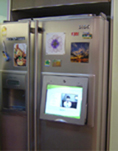 The sixth system is “home network.” It connects an electronic appliance of a family to a network and can share information between appliances. Home network uses wire and wireless technology. Wire uses existing telephone lines or electric lines. If a person uses wires, he or she connects a line to an appliance. People can operate an appliance by remote control or handheld terminal. Wireless uses a network without wire. The strong points of wireless are mobility and flexibility are guaranteed, and it is convenient to change network. If a person installs a wireless LAN, sets the system up around home, and attaches a LAN card within appliances, he or she can use them regardless of time and place. People can regulate electronic appliances with a cellular phone or a remote control. It is possible to construct a real cyber home because people can connect to electronic appliances through the Internet at home or outside.The seventh system is “u-health care.” The word “ubiquitous” is abbreviated to “u.” U-health care means prevention of disease, diagnosis, medical care, and aftercare by computing technology. It perceives the state of the body of a resident or a change through sensors. The information is sent in real-time to the central server of a medical center. By the fast progress of technology, the u-health care generation will be realized in the near future.
The sixth system is “home network.” It connects an electronic appliance of a family to a network and can share information between appliances. Home network uses wire and wireless technology. Wire uses existing telephone lines or electric lines. If a person uses wires, he or she connects a line to an appliance. People can operate an appliance by remote control or handheld terminal. Wireless uses a network without wire. The strong points of wireless are mobility and flexibility are guaranteed, and it is convenient to change network. If a person installs a wireless LAN, sets the system up around home, and attaches a LAN card within appliances, he or she can use them regardless of time and place. People can regulate electronic appliances with a cellular phone or a remote control. It is possible to construct a real cyber home because people can connect to electronic appliances through the Internet at home or outside.The seventh system is “u-health care.” The word “ubiquitous” is abbreviated to “u.” U-health care means prevention of disease, diagnosis, medical care, and aftercare by computing technology. It perceives the state of the body of a resident or a change through sensors. The information is sent in real-time to the central server of a medical center. By the fast progress of technology, the u-health care generation will be realized in the near future.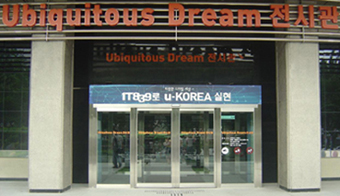 Many countries are already studying ubiquitous. Korea introduced it in 2002. In Korea, the Ubiquitous Forum was founded on April 16, 2003. Rho Jun-hyong, the minister of information and communication, said, “In the past ten years, Korea has been transformed into an information nation, with a world-class IT infrastructure with 12 million high speed Internet users and 35 million mobile phone owners. Everyone is welcome to come and experience the future of digital life in a ubiquitous networking environment, which was made possible by many leading IT companies in Korea.”
Many countries are already studying ubiquitous. Korea introduced it in 2002. In Korea, the Ubiquitous Forum was founded on April 16, 2003. Rho Jun-hyong, the minister of information and communication, said, “In the past ten years, Korea has been transformed into an information nation, with a world-class IT infrastructure with 12 million high speed Internet users and 35 million mobile phone owners. Everyone is welcome to come and experience the future of digital life in a ubiquitous networking environment, which was made possible by many leading IT companies in Korea.”Would you like to go to the world framed by ubiquitous? If so, visit the Ubiquitous Dream Hall right now. It is located on the first floor, Communication Center Building,100 Sejongro, Jongro-gu, Seoul. At the Ubiquitous Dream Hall, one can easily see the shape of digital life in the future from digital homes to offices, stores, and cafes. Also, a variety of technologies from the present to the future can be seen there, such as digital TV, intelligent service robots, next generation mobile telecommunication devices, and much more.
You can experience an amazing world ahead of time. In this dreamlike world, intelligent machines helped me to do what I wanted, and a robot helped me with housework. Wherever I go in this convenient network society, a little electronic chip will help provide the necessary information. These aren’t a dream anymore. The ubiquitous information revolution will bring a surprising future society. Experience them in the Ubiquitous Dream Hall.








